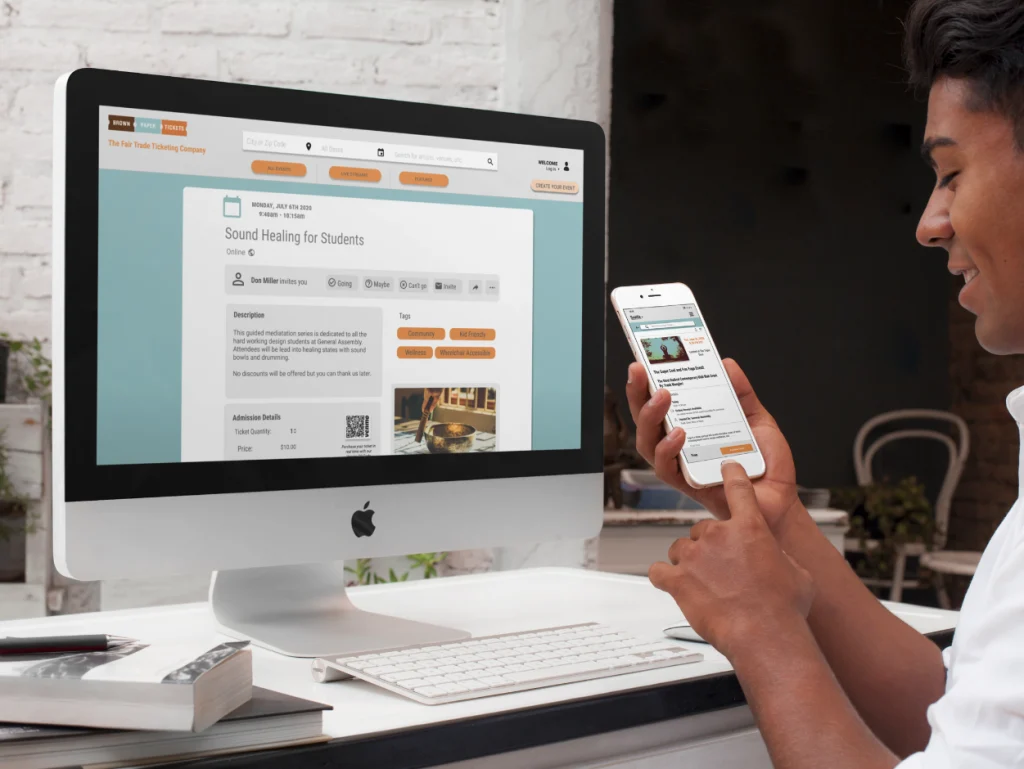Events don’t end when the guests go home. For organizers, some of the most valuable work happens in the days that follow. From audience insights to vendor performance and sponsor outcomes, post-event data offers a roadmap for better planning and stronger results. Platforms like Brown Paper Tickets, a ticketing service offering digital tools for seamless and accessible event planning, help lay the foundation by tracking key metrics in real time, making it easier to turn numbers into next steps.
Whether it’s a festival, fundraiser or hybrid summit, meaningful data tells a fuller story than ticket sales alone. The way guests engaged, where challenges arose and which moments resonated all help shape what comes next. Organizers who use that information thoughtfully are more likely to build momentum, secure future support and make improvements, with purpose.
Start With a Wrap Report That Tells the Whole Story
A wrap report is more than a list of what happened. It’s a tool for reflection, alignment and action. When structured clearly, it helps teams review key performance areas, evaluate partners and identify patterns that inform future planning. Effective wrap reports typically include both quantitative and qualitative data, such as attendance numbers, ticket revenue, session popularity, guest feedback and logistical notes. Some organizers also include press mentions, social engagement and photos to document event reach and tone.
Including insights from vendors, volunteers and venue teams offers a broader view of how the event was experienced behind the scenes. What went smoothly? What took longer than expected? What questions came up again? These notes often highlight gaps that data alone may miss. Tools help ease the process by offering exportable reports and real-time summaries. Having quick access to key numbers makes it easier to focus on what they mean, rather than where to find them.
Analyze Engagement, Not Just Attendance
Attendance tells you how many people showed up, while engagement tells you what they did once they arrived. Whether your event was in-person, virtual or hybrid, the moments when people leaned in offer the clearest signal of impact. Engagement can be measured in many ways, including how long attendees stayed at sessions, how actively they participated, what they responded to and how often they interacted with your team or content.
Patterns in this data can reveal what resonated most. If one speaker drew a larger crowd or if guests left a session early, those trends are worth noting. Sometimes, low participation signals a need to rethink pacing or format. Other times, it reveals a mismatch between audience interest and content focus. When event platforms track engagement alongside registration, planners can view the full journey of a guest, from signup to interaction. It provides tools that help organizers connect these dots across digital and physical touchpoints.
Map the Stakeholder Impact
Event success often involves more than just attendees. Sponsors, partners, vendors and internal teams each have their version of success. Post-event summaries that reflect their outcomes help reinforce those relationships. For sponsors, impact might include brand exposure, lead capture or content engagement. For vendors, it could mean sales, referrals or positive mentions. Internal teams might focus on workload, execution or attendee feedback.
Organizers who create customized mini reports aligned with each stakeholder’s objectives often experience higher retention rates. Sharing a snapshot of performance, what went well, what could improve and how to build from here shows care and professionalism. It also invites collaboration on what comes next. Templates help streamline this process. One-page summaries with key stats, a short narrative and a few images often do the job. For funders or board members, more detailed versions, with financial and long-term strategy, may be appropriate. Having centralized data makes this easier. Platforms like Brown Paper Tickets support this by tracking event outcomes in one place, reducing the back-and-forth when compiling summaries for different audiences.
Highlight Wins, But Don’t Skip the Gaps
It’s tempting to focus on highlights, especially when sharing post-event outcomes. But gaps are where the learning happens. A report that only praises success may miss an opportunity to grow. If feedback points to confusion about entry or if engagement drops after a certain point in the day, those details should be noted. They don’t need to dominate the story, but they should have space within it.
Many planners find it helpful to gather brief insights from staff or volunteers responsible for key areas. These reflections add valuable perspective and often spark meaningful improvements for future events. Equally important is acknowledging what worked. Documenting the decisions that led to success helps replicate them. Was it the event timing? The way partners were briefed? A new check-in flow? Recording these wins prevents having to relearn them next time.
Use Insights to Build the Blueprint Forward
Post-event data only helps if it leads to action. The final step is applying what you’ve learned to shape what’s next. That might mean adjusting your run-of-show to reflect engagement patterns, reworking sponsor packages based on visibility outcomes, improving signage based on feedback about navigation or changing your outreach strategy based on registration behavior.
Organizers can also use post-event insights to pitch new events. A sponsor summary showing brand lift or an attendee report showing repeat interest can support budget requests and partnership renewals. Having a consistent system for storing, reviewing and applying data helps reduce planning time, across future events. It supports recurring events and allows planners to build on past templates, metrics and communications, without starting from scratch.
Planning Better by Looking Back
The most successful events aren’t always the biggest. The most impactful events feel intentional, meaningful and aligned with what matters most. Post-event data supports that by anchoring future planning in concrete insights. It’s not about chasing perfection. It’s about being thoughtful with what you’ve learned and generous with what you share. Wrap reports, engagement analysis and stakeholder summaries aren’t just paperwork, they are bridges between what was and what could be. By using accessible tools and a clear-eyed review process, planners give themselves the insight to move forward, with confidence. It supports that momentum by helping turn the details into direction, so the next big win isn’t a guess. It’s built on what you already know.






More Stories
Freedom Forever Solar Reviews Explore How AI Is Reshaping Solar Project Timelines Through Permitting Intelligence
The Art of Defined Spaces: Achieving Openness with Glass Office Partitions
The Complete Guide to Choosing the Right Williams Socket Sets